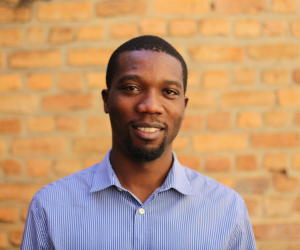At the United Nations Sustainable Development Summit in September 2015, MASS Design Group announced their plans to build three African Design Centres (ADCs) in strategic cities on the African continent with the aim of training up the first generation of human-centred, African designers.
Christian Benimana, a Rwandan architect and designer at MASS, made a keynote speech at the summit on behalf of the group explaining the motivation for the new centres. Benimana is one of very few African architects: he points out that Italy alone has 153 000 designers, in comparison to only 35 000 across the whole African continent. The ADCs will be a step towards closing this deficit.
Rwanda, like many African nations, has no school of architecture. When Benimana decided to study, he had to get a scholarship to go to a university in Shanghai, China, and attended classes in Chinese. During his studies he saw first hand the kinds of problems caused by rapid urbanisation in China: population displacement and uncontrollable pollution. When Benimana returned to Rwanda in 2010, he witnessed problems that were similar or worse to those he had seen abroad. His country was also going through a major urban-construction boom:
“Entire neighbourhoods [in Rwanda] were being destroyed to leave place for these new developments.”
MASS Design Group practise human-centred design: their working philosophy is based on the understanding that architects do not merely devise buildings, but are also the designers of the lasting impact these buildings have. The first project that Benimana was involved with at MASS was the Butaro District Hospital, which employed 4000 local people and used only local materials, saving millions of dollars in construction fees. The hospital was designed with the patient experience in mind: every bed faces a window so that patients can see out to the beautiful landscape of the area, promoting peace of mind and accelerating recovery. It is a building that not only created jobs, but also promotes dignity in the local area. According to Benimana, this design philosophy should be applied in all situations.
Imagine Africa’s cities – but not as vast slums; as the most resilient, the most socially inclusive places on earth. This future is actually possible with the African Design Centres.
Africa’s urban population is going through a period of immense growth, and without designers to help conceive and build the infrastructure, systems, schools, hospitals, city plans and digital programmes to support future generations, the continent is faced with massive social, economic and health problems. The designers that can help shape a better future, according to Benimana, must come from the “talent and spirit that is uniquely African”.
Benimana asserts that the three centres in Africa could be where this talent is harnessed and nurtured.
“My audacious dream is to create the first African Design Centre,” says Benimana. “We need architectures and builders… We need systems designers, we need product designers, doers and makers, we need a whole community of human-centred African designers.”
The ADCs will offer two-year fellowships to the most promising graduates, supported by leading intellectuals from across the world. The graduates from the ADCs will be placed in government organisations to drive and inform policy making, will be at the head of future educational institutions to pass their skills on to new generations, and will create business that will create jobs that will drive the economy.
“If we ignore who designs the African cities and how, we are doomed to see the worst environmental degradation, the worst economic inequality and the worst public health disasters. We have to build the creative leadership that is going to make Africa equitable and just. Because that is the only future we want for Africa.”








